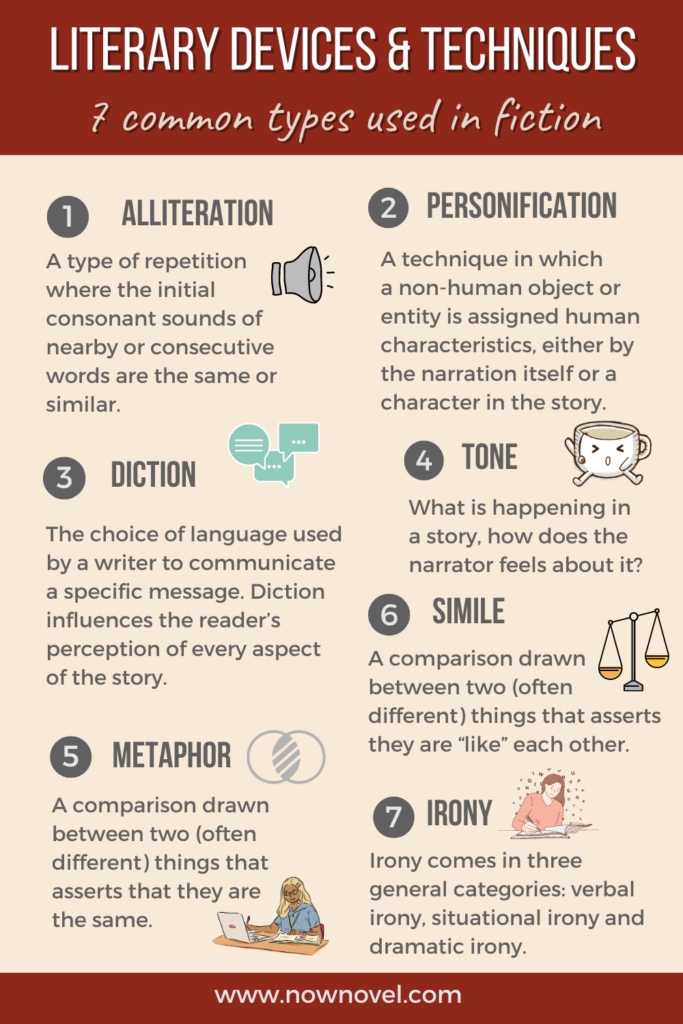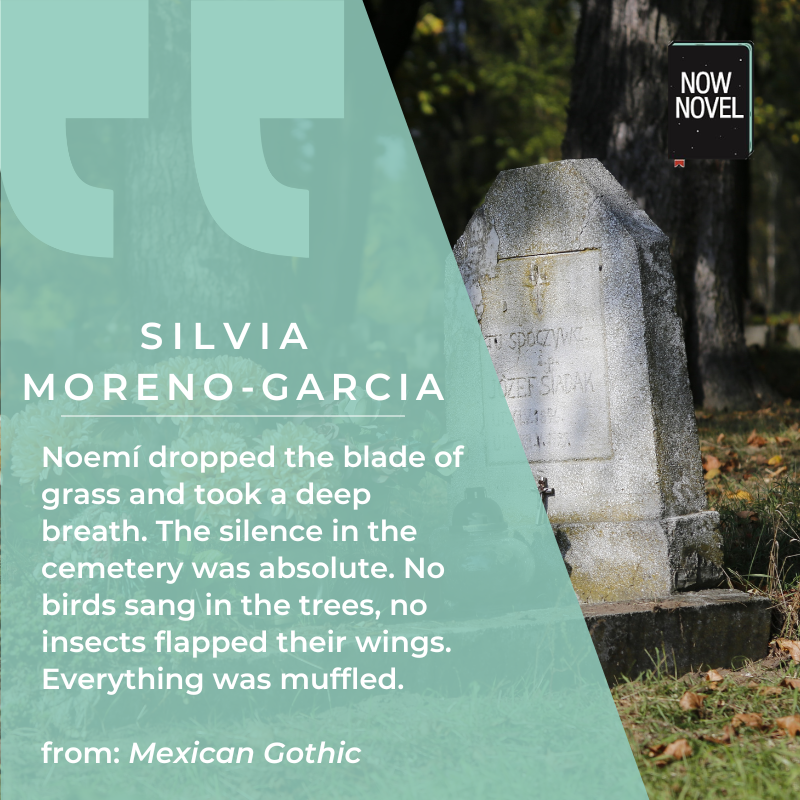Reading is a good recreational activity, but, for writers, it is a vital tool that can be used to hone the craft. The stories we read provide good guidelines for structuring plot and what various types of plot look like in action, as well as offering in-depth examples of various writing techniques.
As you read, you might take the opportunity to expand your vocabulary, investigate the use of literary devices, or make note of how the author approaches things such as dialogue, action, and description.
Reading within the genre you write in, especially between drafts, presents an opportunity to research comp titles (published works that are similar—or comparable—to your work in progress, used to more clearly define the type of reader that your book might attract) and the sorts of things an audience interested in that genre might like, while reading outside of your genre helps improve your comprehension and broaden your horizons.

A quick look at popular romance novels, for instance, will reveal a pattern of key scenes that includes a meeting, an intimate moment, a declaration of love, a breakup, proof of and sacrifice for the main characters’ undying love for each other, and a reunion. This pattern appears in romance stories ranging from Jane Austen’s Pride and Prejudice and Charlotte Brontë’s Jane Eyre to Kelly Quindlen’s She Drives Me Crazy and Stephanie Meyer’s Twilight, and provides a helpful formula for structuring a romance plot. See Now Novel’s guidelines for writing a romance novel.
Reading like writer means looking at the things you believe the story did well, and things you believe the story did poorly.
What to look out for
As you read, keep an eye out for the following:
Things you believe the story did well, and things you believe the story did poorly.
Keep an eye out for how the author approaches characterization, how they set the scene, what they communicate through dialogue and subtext, how they go about writing action; anything you can think of, and especially anything you may struggle with. Silvia Moreno-Garcia’s novel Mexican Gothic gives readers an idea of the kind of person its protagonist, Noemí Taboada, is right off the bat; she leaves a party early in boldfaced defiance of social convention, and the first description of her notes that she told her date she wanted to win the party’s costume contest, only to switch at the last minute in favor of something more fashionable without telling her beau. As the story progresses, this initial characterization aligns with Noemí’s shrewd, chic, and self-sufficient nature: the author notes as early as page five that she knows what she wants, and, it seems, expects others to keep up.
Subscribe to our newsletter
One million authors use our writing resources to get their books published. Come join them.
Think about what you liked
What you liked and disliked about the story as a whole. This comes down to your personal preference rather than technical skill. Are there any tropes you do or do not like? Did you enjoy the pacing? Did you find the story believable?
Consider what stands out
Any passages or scenes that stand out as particularly well-written? Why? How does the author play with prose and syntax (or sentence and paragraph structure) to create flow? Is there any pleasing imagery or use of repetition to create rhythm?
“All that we see or seem / Is but a dream within a dream,” is from Edgar Allan Poe’s poem, A Dream Within a Dream, and closes out the first stanza. It uses both internal and external rhyme, rhyming the words at the end of each line as well as the words within them, and combines this with repetition. The word “dream” repeats, but as do the initial consonant sounds and internal vowel sounds (alliteration and assonance, respectively). The meter creates a rhythmic, almost hypnotic flow that, taken together with the changing metrical patterns throughout the rest of the poem, gives a shifting effect akin to the sort prevalent in most real dreams.

Look at devices and techniques
What literary devices and techniques do you notice? And how is the author using these devices to convey meaning? Some common literary devices and techniques used in fiction include:
- Alliteration - A type of repetition where the initial sounds of nearby or consecutive words are the same or similar. For example, “Fair is Foul and Foul is Fair” in Act 1, Scene 1 of Shakespeare’s Macbeth.
- Personification - A technique in which a non-human object or entity is assigned human characteristics, either by the narration itself or a character in the story. Apologizing to a trash can when you walk into it, for instance, implies that the trash can is capable of being inconvenienced.
- Diction - The choice of language used by a writer to communicate a specific message. Diction influences the reader’s perception of every aspect of the story, from setting to dialogue to characterization. Poetic diction specifically encompasses other techniques, such as alliteration and repetition.
- Tone - What is happening in a story, and how the narrator feels about it. Note the distinction between narrator and author. The author, of course is not the narrator in a novel, even if the novel is in first-person narration.
- Metaphor - A comparison drawn between two (often different) things that asserts that they are the same. A character may be said to “have a heart of stone,” but we, the readers, know that their heart is, in fact, a heart, and not a rock.
- Simile - A comparison drawn between two (often different) things that asserts they are “like” each other. “I ran like the wind.” “She was as busy as a bee.”
- Irony - Irony comes in three general categories. There’s verbal irony, where a character says something that is usually the opposite of reality, a common example being sarcasm. There’s situational irony, where an outcome is the opposite of what was expected, like when someone writes a song about irony that contains very few actual examples of irony. And, lastly, there’s dramatic irony, when the reader is clued in on something the characters of a story have no idea of. The most famous example of this (or the one most often cited by English teachers) may be in Oedipus Rex: as Oedipus searches for the perpetrator of the previous king’s murder, the audience is aware that he, himself, dealt the killing blow, a fact that Oedipus will not realize until it is too late.
Foreshadowing
As you read, and especially on any re-reads, look for any instances of foreshadowing, how it is implemented, and where it occurs within the story. Let's use another example from Mexican Gothic, which contains the following passage:
If Catalina dies, she thought, she’ll be buried here, and her tomb will be bare. What a horrid thought. But she was horrid, wasn’t she? Simply horrid. Noemí dropped the blade of grass and took a deep breath. The silence in the cemetery was absolute. No birds sang in the trees, no insects flapped their wings. Everything was muffled. It was like sitting at the bottom of a deep well, shielded by the earth and stone, from the world.
This passage not only utilizes recurring motifs of silence, life, and death, but foreshadows the central twist of the story—the line “It was like sitting at the bottom of a deep well, shielded by the earth and stone” is an allusion to Agnes, the first wife of the manor’s patriarch.
Read more: examples of using foreshadowing and 8 laws of foreshadowing.

Consider the beats of the story
- Consider the actual beats of the story and where they take place. When is the inciting incident? The climax? The resolution? Are there any irregularities? Does the author play with plot structure in any way, be it through non-linear storytelling or another method? Do they bring anything new or interesting to a traditional story structure? Toni Morrison’s Beloved follows a non-linear plot structure: the inciting incident is, ostensibly, the appearance of the girl who calls herself “Beloved,” but the story itself begins years before the start of the novel, arguably with its protagonist Sethe’s escape from slavery. The climax is Beloved’s banishment by the members of Sethe’s community, but it is also the feast in that same community, after which the townsfolk intentionally avoided alerting a much younger Sethe and Baby Suggs to the presence of slave catchers. The resolution is Beloved disappearing once more, and the community coming together, but it is also Sethe killing her infant daughter to spare her from the horrors of slavery. These events are often presented out of order, or as if they are all happening at the same time, but the novel maintains an almost perfect symmetry.
How to read like a writer
The short answer is, however works best for you. Any format, any method, any combination. Track your notes in as elaborate or streamlined a fashion as you see fit, or don’t track your notes at all, and simply notice things as you go along. You can keep a separate notebook or document for your reading, use sticky notes (or the ‘highlight’ function in ebook format), record yourself voice memos talking through what you’ve gathered—again, anything, anyway.
About the guest contributor
Kayleigh Gallagher is an author, artist, and student currently on year five of running @/so_many_ocs, an Instagram account that seeks to provide informative tips and guides for beginner writers on a variety of subjects, including their own journey with writing and self-publishing.










Having read thousands of books for over 50 years, I never thought about reading like a writer. You gave me ideas and a checklist to focus on to become a good writer. Thank you for this article, it will help me for completing a book for adolescent readers.
Brigitte Cushman - Over 1 year ago
Thanks so much Brigitte. It's so good to know that this blog post helped you. All the best with your book!
Arja Salafranca - Over 1 year ago
Dear Salafraca, Thank you for these information, its my first time to read througj your wonderful message, reading like a writer, I have always loved to write, with great idea, though I am struggly with writting. Thank you, it was nice to have this knowledge. My name is Paula.
Paula Akhile - Over 1 year ago
Dear Paula, Thanks so much for your message and reaching out. So pleased that this was useful. All the best with your writing!
Arja Salafranca - Over 1 year ago